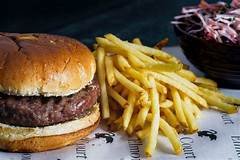Nathan
SF VIP
- Location
- High Desert- Calif.
Obesogens are certain chemical compounds that are hypothesised to disrupt normal development and balance of lipid metabolism, which in some cases, can lead to obesity. Obesogens may be functionally defined as chemicals that inappropriately alter lipid homeostasis and fat storage, change metabolic setpoints, disrupt energy balance or modify the regulation of appetite and satiety to promote fat accumulation and obesity.
There are many different proposed mechanisms through which obesogens can interfere with the body's adipose tissue biology. These mechanisms include alterations in the action of metabolic sensors; dysregulation of sex steroid synthesis, action or breakdown; changes in the central integration of energy balance including the regulation of appetite and satiety; and reprogramming of metabolic setpoints. Some of these proposed pathways include inappropriate modulation of nuclear receptor function which therefore allows the compounds to be classified as endocrine disrupting chemicals that act to mimic hormones in the body, altering the normal homeostasis maintained by the endocrine system.
Obesogens have been detected in the body both as a result of intentional administration of obesogenic chemicals in the form of pharmaceutical drugs such as diethylstilbestrol, selective serotonin reuptake inhibitors, and thiazolidinedione and as a result of unintentional exposure to environmental obesogens such as tributyltin, bisphenol A, diethylhexylphthalate, and perfluorooctanoate.
https://en.wikipedia.org/wiki/Obesogen
There are many different proposed mechanisms through which obesogens can interfere with the body's adipose tissue biology. These mechanisms include alterations in the action of metabolic sensors; dysregulation of sex steroid synthesis, action or breakdown; changes in the central integration of energy balance including the regulation of appetite and satiety; and reprogramming of metabolic setpoints. Some of these proposed pathways include inappropriate modulation of nuclear receptor function which therefore allows the compounds to be classified as endocrine disrupting chemicals that act to mimic hormones in the body, altering the normal homeostasis maintained by the endocrine system.
Obesogens have been detected in the body both as a result of intentional administration of obesogenic chemicals in the form of pharmaceutical drugs such as diethylstilbestrol, selective serotonin reuptake inhibitors, and thiazolidinedione and as a result of unintentional exposure to environmental obesogens such as tributyltin, bisphenol A, diethylhexylphthalate, and perfluorooctanoate.
https://en.wikipedia.org/wiki/Obesogen


